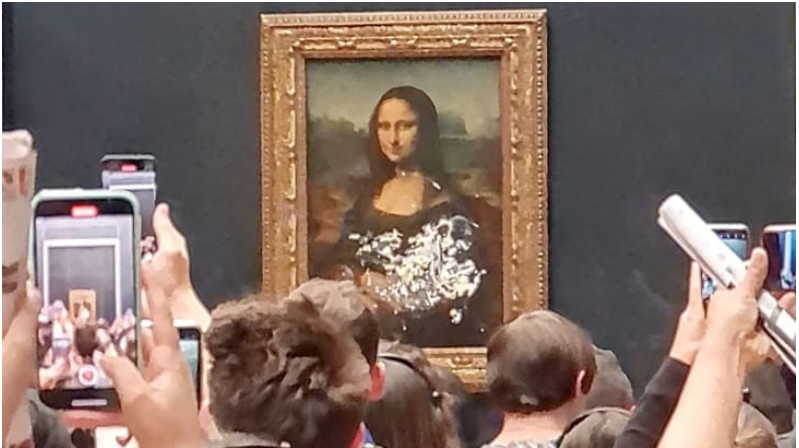On Sunday, a visitor to the world-famous Louvre museum in Paris made several attempts to damage the “Mona Lisa” by smearing frosting over its protective glass top.
A man threw a piece of cake at Picasso’s painting “The Women of Algiers (Version O)” at the Louvre in Paris on Tuesday, according to a statement from the museum. He was filmed by other visitors, who posted the footage on social media. In one video, he is seen departing on foot with a wheelchair nearby.
In a statement, the Louvre said that a visitor who simulated a disability used a wheelchair to approach the work, which was installed in a secure display case. The museum applied its usual procedures for people with reduced mobility, allowing them to admire this major work of art.
A visitor at the Louvre threw a pastry he had hidden in his personal belongings at the glass case covering the Mona Lisa. This act did not damage the painting, which was not damaged in any way.” Museum officials clarified that visitors in wheelchairs are allowed to move in front of other museum-goers to better see the work.
A 36-year-old man was arrested and taken to a psychiatric infirmary in the police headquarters after he attacked one of the glass pyramid’s at The Louvre museum with a hammer. An investigation has been opened by the prosecutor for “the attempt of damaging a cultural property.” The Louvre has filed a complaint.
A museum-goer’s video posted on Twitter shows the man saying in French, “Think of planet Earth, there are people destroying it,” while security escorts him away from the Louvre Museum in Paris.
Another video of the scene displays a staff member cleaning icing from the glass.
The Mona Lisa, arguably the most famous painting in the world, attracts millions of visitors each year who line up to pose with the small artwork, which is just over 2.5 feet tall and under 2 feet wide.
The Mona Lisa, a portrait of the Florentine noblewoman that is considered one of the world’s greatest works of art, has been the target of both vandalism and theft in its nearly 500-year history. In 1911, a Louvre employee stole the work from the museum and tried to sell it to an art dealer; he was arrested six weeks later when the painting was recovered (with some damage) in Florence. The bottom of the canvas suffered an acid attack in the 1950s. To protect against further damage, officials installed bulletproof glass around it and added sensors for monitoring humidity and temperature changes. In 2009, a woman threw a ceramic cup at the painting but missed; she was arrested for willful destruction of property.








